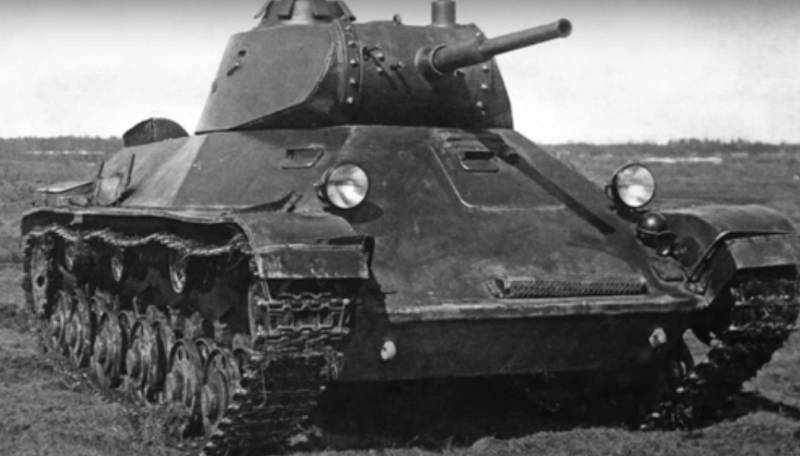T-50: An infantry escort tank that never became the most massive armored vehicle in the Red Army

In the 30s, the only a tank infantry escort in the USSR was the T-26, built on the basis of the British Vickers Mk.E. However, by the end of the decade, due to the increase in the power of artillery, a vehicle with 15 mm armor did not have a single chance to survive on the battlefield.
So, already in the summer of 1940, thanks to the efforts of the designers of the Leningrad Pilot Machine Building Plant No. 185 named after S.M. Kirov, a tank was proposed to replace the T-26, called the T-126SP.
45-mm armor protection (except for the roof and bottom, where it was 20 mm) of the new machine was practically in no way inferior to the T-34. But in terms of visibility, the light T-126SP was superior to its average "brother".
The new infantry escort tank was armed with a 45-mm cannon, as well as DT and DS-39 machine guns of 7,62 mm caliber.
Six-cylinder V-3 engine with a capacity of 250 hp. allowed a 17-ton machine to reach speeds of up to 35 km / h. At the same time, the supply of fuel tanks was enough to cover a distance of up to 270 km.
Despite the fact that the tank proved to be quite good at factory tests. It was decided to reduce its weight by reducing the armor. It was also recommended to increase the space for the crew. For these purposes, the designers planned to remove the DS-39 machine gun.
Already in the autumn of the 40th year, a new tank was created at the Leningrad Machine-Building Plant No. 174 named after K.E. Voroshilov, which received the designation "object 135". Tellingly, the T-126SP was transferred to the enterprise for revision, however, in some sources you can find information that the "object 135" was developed in parallel.
Already at the beginning of 1941, the machine was made in metal and successfully passed factory tests. The new infantry escort tank entered the troops under the T-50 index.
Unlike the T-126SP, the new vehicle had a welded hull and turret. The latter, with its streamlined shape, resembled that of the T-34.
The mass of the T-50 was 13,8 tons, although for this the designers had to reduce the thickness of the armor (when compared with the T-126SP): the tower - up to 37 mm, the feed - up to 25 mm, and the bottom and roof - up to 15 mm.
As armament, the vehicle received a 45-mm cannon paired with two DT machine guns, which is rather atypical for Soviet-made tanks.
The 300-horsepower V-4 engine allowed the T-50 to reach speeds of up to 52 km / h, and two tanks of 50 liters each - to cover a distance of up to 344 km.
Despite the fact that, due to its excellent performance, this tank was planned to be the most massive in the Red Army, its fate turned out to be extremely difficult. Due to a number of difficulties, the production of the tank, which, by the way, did not become massive, was discontinued in 1942. By that time, about 60 cars had been produced.
Information